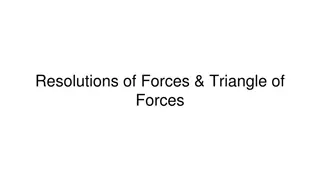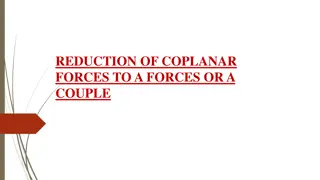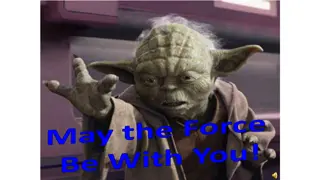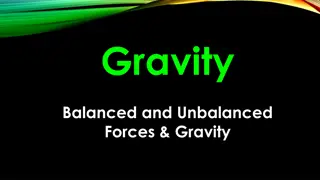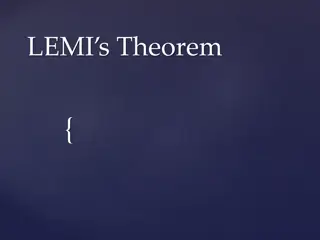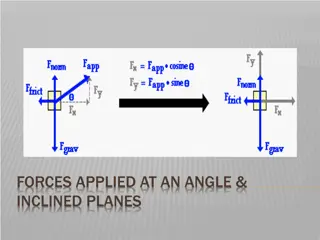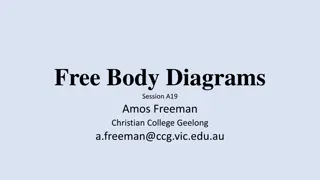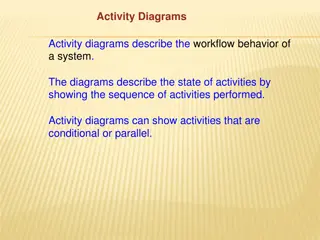Understanding Forces and Free Body Diagrams in Physics
Explore the concepts of forces, dynamics, and free body diagrams in physics. Learn about different types of forces, how to draw free body diagrams, calculate net force, and solve example problems involving forces and motion.
Download Presentation

Please find below an Image/Link to download the presentation.
The content on the website is provided AS IS for your information and personal use only. It may not be sold, licensed, or shared on other websites without obtaining consent from the author. Download presentation by click this link. If you encounter any issues during the download, it is possible that the publisher has removed the file from their server.
E N D
Presentation Transcript
Definitions Dynamics - the study of forces and the effects they have on motion Force - a push or pull that acts on an object Force is not energy or power!
Common Forces Read http://www.physicsclassroom.com/class/newtlaws/Lesson- 2/Types-of-Forces Make a chart with columns: Force, Definition, Direction of Action, Type of Force (contact or action at a distance) and real life examples
Force Body Diagrams Shows all forces acting on the object Use a square to represent object Include a coordinate system If the object is going up a hill, use the surface as the x axis Gravity should be broken down into components (using the appropriate coordinate system)
Example # 1: Draw the free body diagram of a car accelerating forward
Example 2: Draw the free body diagram of a biker moving up a hill while accelerating down the hill.
Net Force Also called: resultant force, total force or sum of all the forces To determine Net Force, find F In 2-D problems, find Fx and Fy
Example # 3: Draw the free body of a biker going at a constant velocity up a hill with the values of each force. The mass of the biker and bike is 60.0 kg. The angle of the hill is 40 degrees from the horizontal. The coefficient of friction against the biker is 0.0030.
Example # 4: Two tugboats are pulling a barge. Each tugboat pulls with a force of 10 000 N each with angle of 20 degrees from the forward motion of the barge. (Note: The tugboats 20 degrees directions are on each side of the straight forwards direction). The barge has a mass of 1.80 X 104kg. What is the acceleration of the barge?
Practice Draw FBD s for each of the following situations for the object in bold. Include all forces involved; draw in the components for all vector and determine their magnitude using variables or greater than, equal or less than statements if possible. You push your ruler westward at a constant speed across your desk by applying a force from an angle of 25o above the horizontal A cup hanging from a hook A person standing in an elevator that is moving downwards A person standing in an elevator that is moving upwards A hockey puck sliding freely in a straight line down an ice rink A crate being dragged across a floor, with significant friction, by a person pulling on a rope at an angle of 23oabove the horizontal. The force of gravity on a textbook is 18N [down]. What is the net force on the book if it is held stationary? What is the net force on the book if you drop it? A football is being thrown to a receiver. Gravity is pulling down on the ball with a force of 10N [down]. Air resistance is acting on the ball with a force of 3 N [43obelow the horizontal]. Harjot pushes a book with a force of 16N [N34oE] while Amandeep pushes on a book with a force of 23 [N65oW]. If Rohin wants to keep the book stationary, with what force does he need to push? Draw an FBD with your solution. 1. a) b) c) d) e) f) 2. a) b) 3. 4.
From Nelson 12 Physics text Pg. 76#1-6




